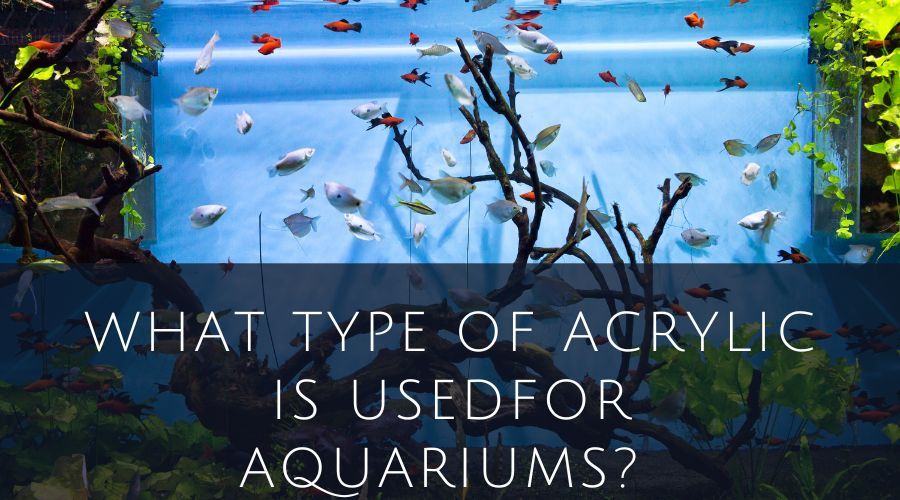
Acrylic and glass are the two primary materials used in constructing aquariums. Each has its advantages and drawbacks, and the choice of material largely depends on the specific needs of the aquarium and the preferences of the owner. We'll delve into the world of acrylic aquariums, exploring the various types of acrylic sheets, their characteristics, and factors to consider when choosing the right material.
Before we delve into the specifics of acrylic, it's important to understand the differences between acrylic and glass aquariums. Glass has long been a standard choice for aquariums due to its durability and clarity. However, acrylic aquariums are becoming increasingly popular for several reasons.
Acrylic offers remarkable clarity, and some even use low iron glass in their acrylic panels to achieve optimal transparency.
Acrylic is highly customizable, making it a great option for DIY projects or large tanks with exact size requirements.
Acrylic is considerably lighter than glass, making it easier to move and install.
Thick acrylic sheets are incredibly strong and can withstand substantial pressure, making them suitable for large tanks.
Acrylic is more scratch-resistant than glass, although it can still develop scratches over time.
When it comes to acrylic aquariums, not all acrylic sheets are created equal. Cast acrylic is often preferred due to its clarity, strength, and the ability to resist scratches better than other plastic materials. It's a good idea to consider the main reason for your aquarium and choose the best material accordingly.
The thickness of the acrylic sheets is an important factor. Thicker acrylic panels can withstand more pressure, making them suitable for larger aquariums. As a general rule, for aquariums of 50 gallons or more, you should opt for acrylic sheets that are at least 1 inch thick.
While acrylic is less prone to scratches than glass, it can still get scratched over time. When cleaning your acrylic tank, use care and avoid abrasive materials. If scratches do occur, they can often be repaired with acrylic glue.
Acrylic aquariums have become a popular choice for fish enthusiasts, especially for DIY projects and large tanks. The selection of the right type of acrylic and its thickness is crucial to ensure the safety and longevity of your aquarium. Remember that the best material may vary depending on the specific needs of your new aquarium.
When considering a new aquarium, whether it's for fish or other aquatic life, carefully assess the materials available, keeping the benefits and drawbacks of acrylic in mind. With the right choice, your acrylic aquarium can provide a stunning and unique display for years to come. Good luck with your new aquarium project!
The thickness of acrylic needed for an aquarium depends on the tank's dimensions. As a general rule of thumb, here are some guidelines:
• For tanks up to 50 gallons: 1/2 inch to 3/4 inch thick acrylic is generally sufficient.
• For larger tanks: Tanks with a capacity of over 50 gallons may require thicker acrylic, ranging from 3/4 inch to 1 inch or more.
It's essential to consult with the manufacturer or an experienced aquarium builder to determine the exact thickness required for your specific tank size and water pressure.
Acrylic sheets used in aquariums do not significantly block light waves. Acrylic is transparent and allows light to pass through, making it a suitable material for aquariums that rely on artificial lighting or natural sunlight for the well-being of aquatic life and the aesthetic appeal of the tank. However, it's important to note that the quality of acrylic and its clarity can vary, so using high-quality acrylic or low iron glass in the construction of the aquarium can help maximize light penetration and maintain excellent visibility within the tank.
Plexiglass is a trade name for acrylic, so it is a suitable material for aquariums. However, it's crucial to use high-quality, cell-cast acrylic designed for this purpose. Ensure that the acrylic you select is free from impurities and additives that could be harmful to aquatic life. Always consult with reputable manufacturers and suppliers to ensure you are using the right type of acrylic for your aquarium.
In conclusion, acrylic aquariums have become a popular choice due to their versatility, durability, and insulation properties. Selecting the right type of acrylic is essential, and it depends on your specific needs and the size of the aquarium. Be mindful of the thickness requirements to maintain the structural integrity of your tank, and always opt for high-quality acrylic materials. When properly chosen and maintained, acrylic aquariums can provide a stunning and safe environment for your aquatic companions.